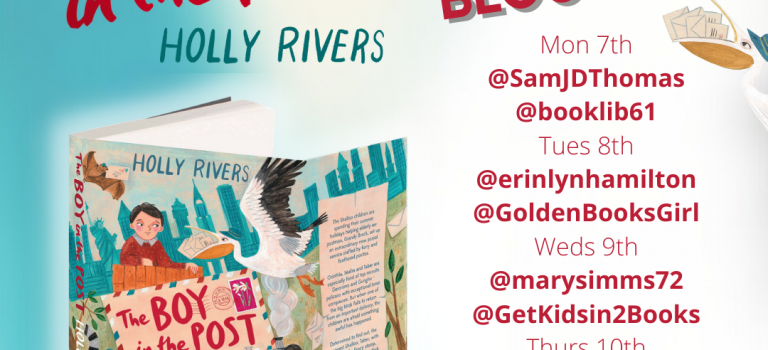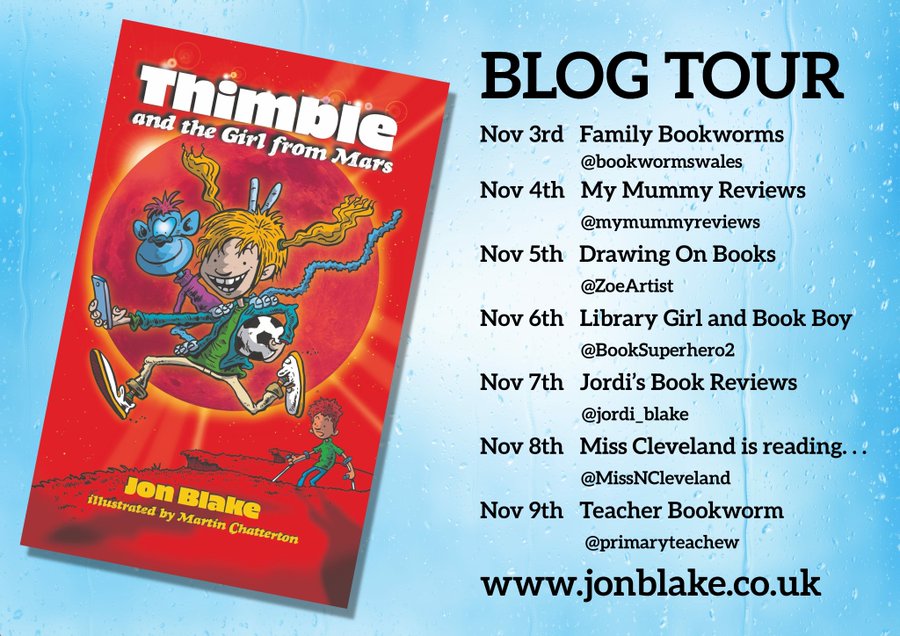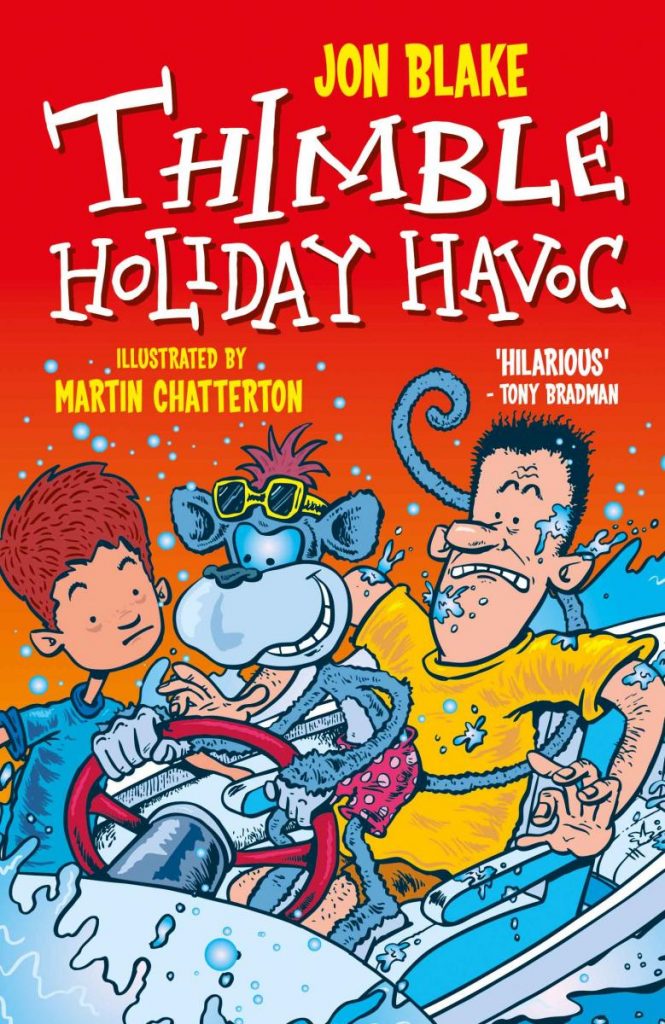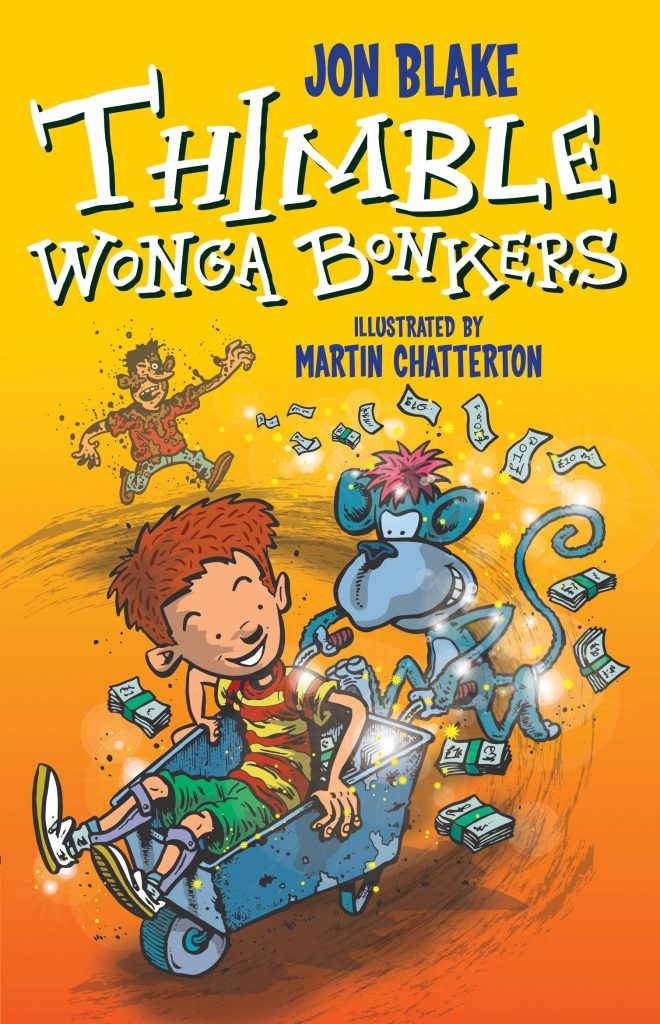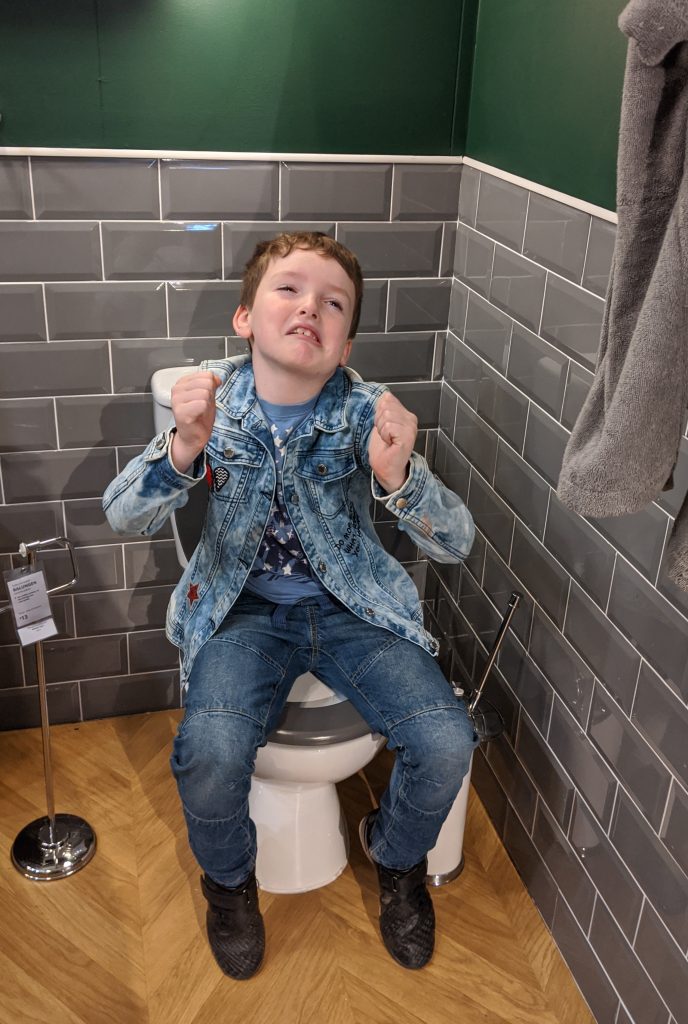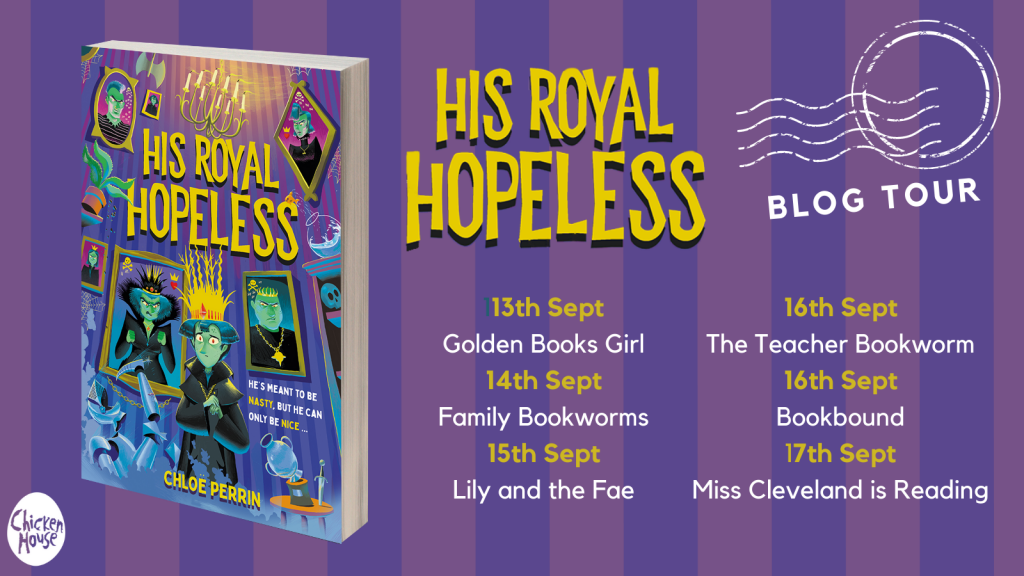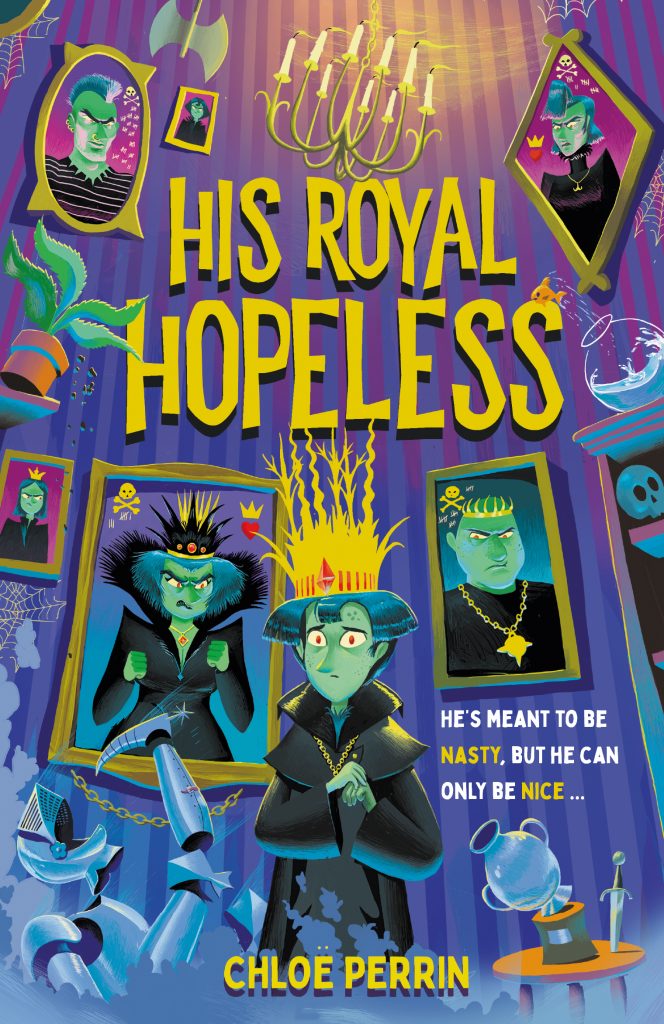
What’s the strangest thing to be sent through the post? Well, after a few hours down several internet rabbit holes, I can tell you that there are no limits to the things that people have attempted to send through our beloved Royal Mail. Pets, children, suffragettes, bricks, shepherd’s pie (warm), game (just a label around the neck will do) and a severed ear have all been wrapped and sent in the history of the international postal service. “Mail artists” have sought to push the envelope (thank you very much) and write addresses on unwrapped items such as leaves, apples, potatoes and a piece of toast.
It appears Holly Rivers was inspired by these tales to write The Boy in The Post (charming and funny with a golden heart), her second novel with Chicken House. The book features children mailing themselves to New York in order to solve their problem. You see, the Shalloo siblings have taken on a job for the summer holidays. Their mum is too wrapped up in her second-hand car business to give them her attention and so they answer the call of Grandy Brock to help him establish a new kind of postal service. The kind of postal service that has animals delivering the mail. Animails. Yes that’s right – Grandy Brock has a menagerie of feathers and furs (as well as a rather impressive number of his own children) and is trying to get his new business venture off the ground.
Taber, the youngest of the Shalloo siblings, is responsible for training Geronimo, a pelican, to find it’s way home. Using inbuilt navigation systems, this all goes rather swimmingly (soaringly?) and the bird becomes the best homing pelican you can imagine. However, following an international flight, the bird fails to return home and Taber holds himself responsible. The young boy takes off in the middle of the night, posting himself with a shipment to New York. Taber’s brother and sister become very concerned for him and crate themselves off in a similar manner, embarking on the adventure of a lifetime.
The book has a very classic, vintage feel. The characters are brilliant – written with so much joy you can’t fail to fall in love with them. Grandy Brock is a favourite. He’s eccentric and peculiar but has “a mischievous twinkle in his eyes that hinted at adventure and excitement and fun.” He’s warm and generous and shows kindness that the Shalloo siblings have rarely seen. The book is also laden with some of the best postal-related puns you are ever likely to feast on (it’s all in the delivery!) Now that’s definitely something to write home about.
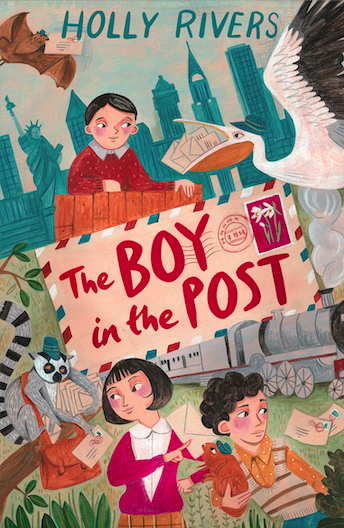
We’re delighted to be able to share this Q and A with Holly Rivers which delves a bit further into the inspiration behind the book:
Tell us a little about your new novel, The Boy in the Post
The Boy in the Post is a postal-themed adventure story set across land, sea and sky! It follows the Shalloo siblings — adventurous twelve year old Orinthia; nature-loving five year old Taber; and sensible middle child Séafra.
During the summer holidays the three siblings accept a summer job from an eccentric old man called Grandy Brock who lives in a tumbledown windmill. He and his five adopted children are opening a very special postal service called The Mailbox Menagerie, which is to be staffed entirely by animals and birds! The Shalloo siblings become especially fond of Geronimo, a homing pelican. But when the big bird fails to return from a delivery to New York, the Shalloo siblings have no choice but to post themselves across the Atlantic to find her…
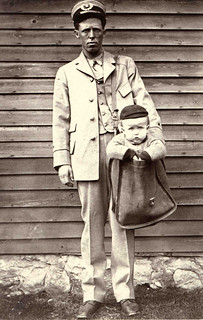
What inspired the story?
The story was inspired by a fascinating article published by The Smithsonian Institute, about children who were sent through the mail in the 1900s. Yes, back then it was legal to send your kids through the post! The first child delivered by the U.S. parcel post service was a boy in Ohio, in 1913 — his parents paid 15 cents for the stamps and insured their son for $50, who was then delivered to his Grandmother’s house a few miles away. Even though these children weren’t technically stuffed into mailbags (and instead travelled in the mail vans of trusted postmen) I couldn’t help but start imagining prospective characters being wrapped in brown paper and stamps being stuck to their foreheads; and the idea for The Boy in the Post was born!
What was your favourite piece of information that you uncovered in your research?
I loved reading about loads of other weird and wonderful things that have been sent through the post and intercepted over the years — a turnip with the recipient’s address carved into its flesh; a hive of live bees; false teeth; jars of scorpions; prosthetic limbs; a pair of underpants with an address scrawled across the crotch; a first edition copy of Ulysses deemed ‘obscene’; a brace of game birds; a tree trunk; a building’s worth of bricks; and two suffragettes hoping to get to Herbert Asquith! The bizarre and eccentric side of humanity never fails to inspire and entertain me!
Who were your favourite characters to write?
I had a hoot (excuse the pun) coming up with ideas for my animails — the animals and birds that work at The Mailbox Menagerie. I really let my imagination run wild and ended up penning a homing pelican who gets paid in sardines; a fruit bat who will only work the night shift; a pair of Sphynx cats in charge of licking stamps; an octopus who can deliver 8 parcels at a time; and snakes who cane spell out postcodes with their bodies. All the while I had my own pet chihuahua, Silver snuggled up on my lap — whose snores and farts and woofs made the experience all the richer! She even turns up in the last chapter of the book…..
What do you think the key message is to take away from the book?
I hope that the story inspires readers to embrace more old-school ways of communicating in their post-pandemic lives. During lockdown — a time dominated by zoom calls and emails — sending and receiving letters from family and friends during brought me so much joy; and there was nothing lovelier than hearing the postman coming up the garden path. I hope the book inspires children to switch off their screens, go buy some stamps and put pen to paper. I’m always open to receiving letters from new pen-pals!

You wrote the book during lockdown, how was that as an experience compared to writing your first novel Demelza and the Spectre Detectors?
When I was working on Demelza I was able to take my laptop to so many different locations to write — libraries, cosy pubs, cafes, parks, the northbound Piccadilly line, number 91 bus! But because of lockdown and the fact that all of our worlds had suddenly become a lot smaller, the entirety of The Boy in The Post was written at an antique desk gifted to me by Grandma. I was surprisingly focused and motivated during lockdown and managed to write the first draft of the book fairly quickly. Penning an epic transatlantic adventure also meant that I could travel the world and go on a journey even though I wasn’t allowed to leave the house — it felt like a real tonic!
You work as a children’s workshop facilitator, does this help to inform your writing?
As you can see from the acknowledgments sections of both Demelza and The Boy In The Post, the children I work with are a huge inspiration to me and my writing. They buoy me with their ideas, energy, humour, warmth and imagination, and I’m always jotting down the unusual and funny things they come out with! Being around children so much reminds me to remain playful, and they stop me from turning into too much of a grumpy old grown-up!
Thank you to Holly and Laura for the Q and A and for allowing us to host today’s post on the Blog Tour. The Boy in The Post is available now to buy in your local independent bookshop, published by Chicken House. You can follow Holly on Twitter.
